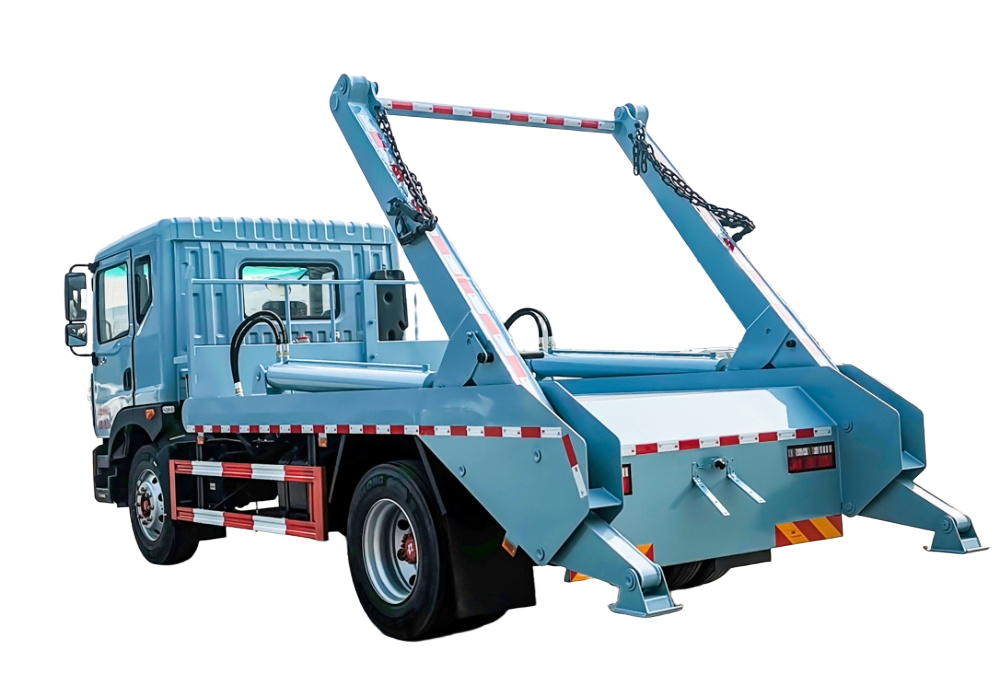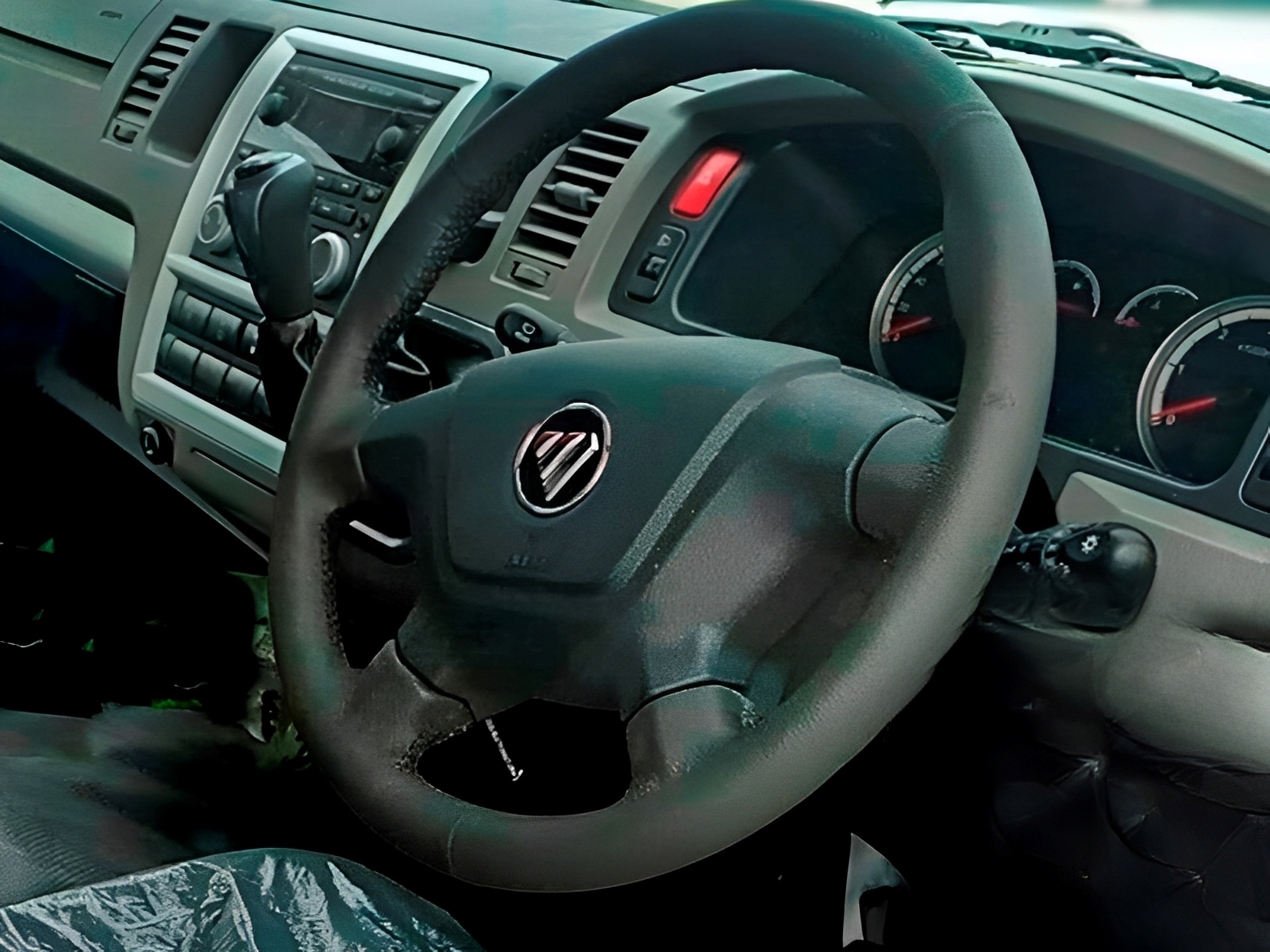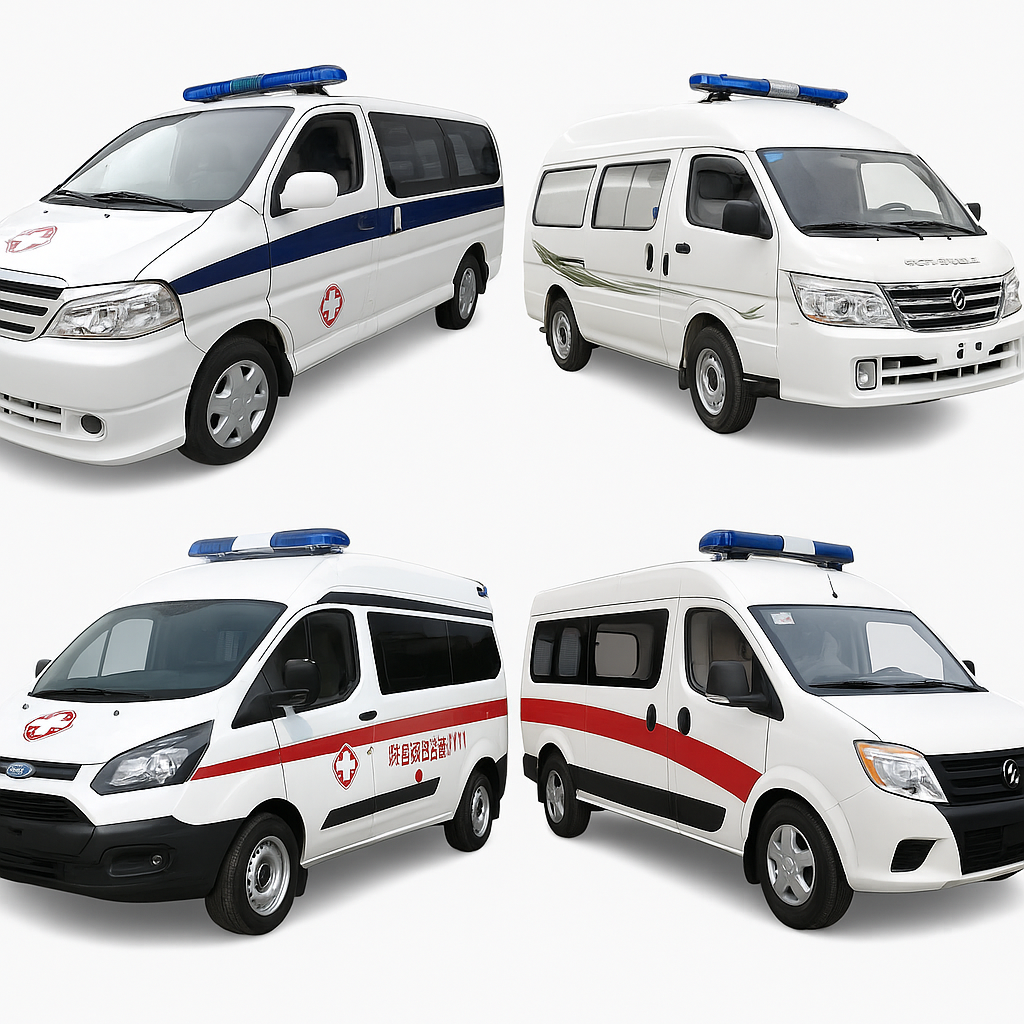Fire Truck vs Emergency Vehicle: How to Choose the Right System for Your Operations
Chengli fire trucks versus traditional emergency vehicles represent critical decisions for public safety departments, yet choosing between specialized configurations demands careful evaluation of 7 decisive factors. This comprehensive comparison analyzes response capability (aerial vs ground-based), equipment integration, operational costs, deployment flexibility, maintenance requirements, regulatory compliance, and long-term value proposition.
While both deliver essential emergency services, Chengli fire trucks excel in multi-function capability and advanced hydraulic systems, whereas traditional emergency vehicles focus on single-purpose optimization and basic response functions. We dissect critical trade-offs—from pump capacity performance to chassis durability—using operational data from 30,000+ vehicles across 80 countries and proven emergency response benchmarks.
Whether prioritizing Chengli’s 180° aerial platform coverage or traditional ground-based suppression systems, our data-driven guide equips you to select the optimal emergency response solution. As China’s leading special vehicle manufacturer with 20+ years excellence, Chengli Group provides uniquely qualified insights into these critical safety technologies.
Performance Capabilities: Response Time, Capacity, and Advanced Features
Emergency response effectiveness depends heavily on vehicle capability, equipment capacity, and deployment speed. Key factors include response time optimization, suppression capacity, equipment accessibility, and operational versatility.
Response Time and Deployment Speed
Chengli Fire Trucks generally offer superior response optimization through integrated systems design and streamlined operation protocols. Our aerial platforms deploy in 90 seconds from arrival, compared to traditional ladder trucks requiring 3-5 minutes setup time.
Traditional emergency vehicles focus on rapid arrival with basic suppression capability, though equipment deployment often requires multiple specialized units. Ground-based operations commence immediately but with limited vertical reach and access capability.
Equipment Capacity and Integration
Chengli’s advanced integration provides comprehensive response capability in single vehicle platforms:
- Water capacity: 2,000-8,000 gallon tanks with high-pressure pumps rated 1,500-3,000 GPM
- Foam systems: Class A/B foam proportioning with 200-500 gallon concentrate capacity
- Aerial platforms: 50-130 foot working height with 750-1,000 lb tip loads
- Equipment storage: 150+ cubic feet compartmentalized storage with organized tool layouts
Traditional vehicle configurations typically require multiple units for equivalent capability:
- Pumper trucks: 500-1,500 gallon capacity with 1,000-2,000 GPM pump ratings
- Ladder trucks: 75-100 foot reach with limited water delivery capability
- Rescue vehicles: Equipment storage without integrated suppression systems
- Specialty units: Hazmat, technical rescue requiring separate response deployment
Advanced Technology Features
Chengli vehicles incorporate cutting-edge technology for enhanced operational effectiveness:
- Digital pump control systems with preset pressure/flow combinations
- Thermal imaging integration with display systems for interior visibility
- GPS tracking and dispatch integration for optimized response routing
- Automated aerial platform controls with precision positioning capability
Traditional emergency vehicles emphasize proven mechanical systems with basic operational controls:
- Manual pump controls requiring experienced operator knowledge
- Separate thermal imaging equipment requiring additional training
- Basic communication systems without integrated navigation
- Manual aerial controls demanding extensive operator skill development
Smart Features and Operational Integration
Modern emergency response demands sophisticated integration capabilities beyond basic suppression functions.
Chengli Smart Integration Features
Comprehensive Command Capability: Integrated command centers with communications equipment, scene lighting systems, and operational coordination tools. Vehicle-mounted generators provide sustained power for extended operations without external support requirements.
Advanced Safety Systems: Automated outrigger deployment with ground pressure monitoring, electronic stability control for aerial operations, and comprehensive warning systems for operational safety enhancement.
Multi-Mission Versatility: Convertible configurations enable rescue operations, hazmat response, and disaster relief functions using standardized equipment interfaces and quick-change capability.
Traditional Vehicle Operational Features
Specialized Function Focus: Individual vehicles optimized for specific emergency types provide excellent performance within narrow operational parameters. Standardized controls across vehicle types enable rapid crew adaptation and reduced training requirements.
Proven Reliability: Mechanical systems with decades of field experience provide dependable operation under extreme conditions. Simple maintenance procedures enable field repair capability with basic tools and supplies.
Cost-Effective Specialization: Single-purpose vehicles often provide lower initial costs for departments with clearly defined operational requirements and adequate fleet diversity.
Key Integration Differentiators
Chengli Advantages: Multi-function capability reduces fleet size requirements, advanced technology enhances operational effectiveness, integrated design improves response time and coordination.
Traditional Advantages: Specialized optimization provides maximum capability for specific functions, proven mechanical systems ensure reliability, lower complexity reduces training and maintenance requirements.
Cost Analysis and Value Proposition
Understanding total cost of ownership helps departments make informed equipment decisions balancing capability with budget constraints.
Initial Equipment Investment
Chengli Multi-Function Vehicles typically require higher initial investment reflecting sophisticated integration and advanced capability:
- Aerial platforms: $800,000-$1,200,000 depending on specifications
- Pumper/tankers: $400,000-$700,000 with advanced equipment packages
- Rescue platforms: $500,000-$900,000 including specialized tools
- Custom configurations: $600,000-$1,500,000 based on specific requirements
Traditional Emergency Vehicles offer lower individual unit costs but require multiple vehicles for equivalent capability:
- Basic pumpers: $300,000-$500,000 for standard configurations
- Ladder trucks: $500,000-$800,000 with mechanical systems
- Rescue vehicles: $200,000-$400,000 with basic equipment
- Specialty units: $150,000-$300,000 for focused applications
Operational Cost Considerations
Chengli Integration Benefits:
- Reduced crew requirements through multi-function capability
- Lower fuel consumption per incident through single-vehicle response
- Simplified maintenance with integrated systems design
- Reduced training costs through standardized operation procedures
Traditional Fleet Approach:
- Multiple vehicle deployment increases fuel and maintenance costs
- Larger crew requirements for equivalent operational capability
- Individual maintenance programs for specialized vehicle types
- Extensive training requirements across diverse equipment platforms
Long-term Value Analysis
20-year total cost of ownership analysis reveals significant value differences:
Chengli Multi-Function Approach:
- Initial investment: $800,000 average per vehicle
- Annual operating costs: $45,000 including maintenance, fuel, and crew
- Replacement cycle: 20-25 years with comprehensive service support
- Total 20-year cost: $1,700,000 per vehicle
Traditional Specialized Fleet:
- Initial investment: $1,200,000 for equivalent capability (3 vehicles)
- Annual operating costs: $75,000 for multiple vehicle maintenance and operation
- Replacement cycle: 15-20 years with varying service support
- Total 20-year cost: $2,700,000 for equivalent capability
Deployment and Operational Flexibility
Emergency response effectiveness depends heavily on deployment speed and operational adaptability to varying incident types.
Deployment Speed and Setup Requirements
Chengli Integrated Systems provide rapid deployment capability through automated systems and streamlined operation procedures:
Aerial Platform Deployment: Automated outrigger deployment with electronic leveling reduces setup time to 90 seconds. Integrated pump systems enable simultaneous water delivery and aerial operations without separate equipment positioning.
Equipment Access: Centralized tool storage with organized compartments enables rapid equipment deployment. Hydraulic doors and telescoping drawers provide easy access even in confined spaces.
Chengli vehicles excel in single-response capability, arriving ready for immediate multi-function operation without additional equipment staging.
Traditional Vehicle Flexibility
Specialized Vehicle Advantages: Individual vehicles optimized for specific incidents provide maximum capability when operational requirements match vehicle design. Multiple vehicles enable simultaneous operations at large incidents requiring diverse capabilities.
Crew Familiarity: Standardized vehicle types across departments enable rapid crew adaptation and reduced training requirements. Mechanical systems provide reliable operation with minimal electronic complexity.
Maintenance Accessibility: Simple systems enable field maintenance and repair using standard tools and readily available parts.
Multi-Mission Capability Comparison
Chengli Multi-Function Performance:
- Structure fires: Full suppression and rescue capability in single vehicle
- Vehicle accidents: Extrication tools with aerial access for complex scenarios
- Hazmat incidents: Integrated decontamination and containment systems
- Natural disasters: Multi-purpose capability reducing response complexity
Traditional Fleet Coverage:
- Structure fires: Pumper and ladder combination providing comprehensive capability
- Vehicle accidents: Dedicated rescue vehicle with specialized extrication equipment
- Hazmat incidents: Specialized response vehicle with dedicated equipment
- Natural disasters: Multiple vehicle types enabling comprehensive response capability
Maintenance and Reliability Considerations
Long-term operational success depends on maintenance simplicity and component reliability across varying operational conditions.
Chengli Maintenance Advantages
Integrated Systems Design simplifies maintenance through centralized components and standardized interfaces:
Hydraulic Systems: Single high-capacity hydraulic system powers all vehicle functions reducing component complexity and maintenance requirements. Preventive maintenance includes monthly system inspections and annual component replacement following manufacturer schedules.
Electronic Integration: Centralized control systems with diagnostic capability enable rapid troubleshooting and reduce downtime. Service support includes remote diagnostic capability and 48-hour parts delivery worldwide.
Training Programs: Comprehensive technician certification ensures proper maintenance procedures and reduces premature component failure.
Traditional Vehicle Maintenance
Mechanical System Reliability: Proven mechanical systems with decades of field experience provide dependable operation under extreme conditions. Simple maintenance procedures enable department personnel to perform routine service without specialized training.
Parts Availability: Standardized components across vehicle types ensure parts availability and reduce inventory requirements. Local service support through established dealer networks provides rapid response for maintenance needs.
Component Accessibility: Individual system design enables component replacement without affecting other vehicle functions.
Reliability and Service Life
Chengli Performance Data (based on 30,000+ vehicles in service):
- Average service life: 22 years with proper maintenance
- Unscheduled maintenance: 2.3 incidents per year average
- Parts availability: 99.2% within 48 hours globally
- Customer satisfaction: 4.8/5.0 for service quality
Traditional Vehicle Benchmarks:
- Average service life: 18-20 years with varying maintenance quality
- Unscheduled maintenance: 3.1 incidents per year across fleet
- Parts availability: 95% within 72 hours domestically
- Customer satisfaction: 4.2/5.0 for service quality
Safety and Compliance Standards
Emergency vehicle safety encompasses operator protection, operational safety, and regulatory compliance across international standards.
Chengli Safety Innovation
Advanced Safety Systems integrate multiple protection layers ensuring operator and public safety:
Electronic Stability Control: Automated systems monitor vehicle dynamics during aerial operations preventing dangerous operating conditions. Load monitoring ensures safe working loads preventing equipment damage and operator injury.
Operational Safety Features: Integrated warning systems with 360-degree visibility, automated equipment shutdown during unsafe conditions, and comprehensive operator training programs.
Regulatory Compliance: NFPA standards compliance, CE marking for European operations, and country-specific certifications ensuring global deployment capability.
Traditional Vehicle Safety Standards
Proven Safety Records: Decades of operational experience with mechanical systems provide well-understood safety parameters and operational limitations. Standard safety features include outrigger monitoring, pump pressure relief, and basic warning systems.
Regulatory Adherence: Established compliance with national safety standards and well-documented certification procedures. Training standards based on traditional operational procedures with extensive industry experience.
International Standards Comparison
Chengli Global Compliance:
- NFPA 1901 fire apparatus standards (North America)
- EN 1846 fire fighting vehicles standards (Europe)
- AS 2444 fire brigade equipment standards (Australia)
- ISO 9001 quality management certification
- Customer-specific compliance including Buy American requirements
Traditional Compliance Standards:
- Individual manufacturer compliance varying by brand
- Regional standards compliance based on market focus
- Limited global certification requiring separate approvals
- Quality standards varying by manufacturer
Customer Support and Service Networks
Long-term operational success requires comprehensive support infrastructure ensuring rapid response to service needs and technical issues.
Chengli Global Support Infrastructure
Worldwide Service Network provides comprehensive support regardless of vehicle location:
Regional Service Centers: Dedicated facilities in North America, Europe, Asia-Pacific, and emerging markets staffed with certified technicians and comprehensive parts inventory.
Remote Diagnostic Capability: Advanced telematics systems enable remote troubleshooting and preventive maintenance monitoring. 24/7 technical support with multilingual capability across 15 languages.
Training Programs: Comprehensive operator and maintenance training including initial certification, ongoing education, and specialized technical updates.
Traditional Manufacturer Support
Dealer Network Coverage: Established dealer networks provide local service support with varying capability levels. Parts distribution through regional warehouses with standard delivery schedules.
Factory Support: Direct manufacturer support for complex technical issues and warranty coverage. Training programs based on individual manufacturer standards and procedures.
Service Quality Variation: Support quality varies significantly by dealer capability and geographic location.
Support Performance Comparison
Chengli Service Metrics:
- Emergency response: 2-hour guarantee globally
- Parts availability: 99.2% within 48 hours
- Technical support: 24/7 multilingual capability
- Customer satisfaction: 4.8/5.0 average rating
- Training completion: 98% technician certification rate
Traditional Service Benchmarks:
- Emergency response: 4-24 hours depending on location
- Parts availability: 95% within 72 hours domestically
- Technical support: Business hours with language limitations
- Customer satisfaction: 4.2/5.0 average rating
- Training completion: 85% technician certification rate
Decision Framework: Choosing Your Optimal Solution
Selecting between Chengli integrated systems and traditional emergency vehicles requires careful evaluation of operational requirements, budget constraints, and long-term strategic goals.
Chengli Multi-Function Vehicles: Ideal Applications
Best suited for departments prioritizing:
- Multi-mission capability reducing fleet complexity
- Advanced technology improving operational effectiveness
- Long-term value through reduced total cost of ownership
- Global support infrastructure ensuring reliable service
Optimal scenarios include:
- Smaller departments requiring maximum capability per vehicle
- Urban environments with diverse emergency types
- Budget-conscious operations seeking long-term value
- International deployments requiring global support
Traditional Specialized Vehicles: Optimal Applications
Preferred for operations emphasizing:
- Maximum specialized capability for specific applications
- Proven mechanical reliability with simple maintenance
- Lower initial investment for established departments
- Crew familiarity with traditional operational procedures
Best applications include:
- Large departments with specialized response requirements
- Rural operations with focused emergency types
- Departments with established maintenance infrastructure
- Organizations prioritizing traditional operational approaches
Making Your Decision
Key evaluation criteria should include:
Operational Requirements: Assess incident types, response times, crew capabilities, and deployment patterns to determine optimal vehicle configuration.
Financial Considerations: Evaluate total cost of ownership including initial investment, operational costs, maintenance requirements, and replacement cycles.
Strategic Goals: Consider department growth plans, technology adoption preferences, and long-term capability requirements.
Risk Assessment: Analyze operational risks, safety requirements, and regulatory compliance needs affecting vehicle selection.
Ultimately, Chengli excels for departments seeking advanced multi-function capability with global support, while traditional vehicles serve departments prioritizing specialized performance and familiar operation. Your ideal choice depends on whether integrated capability (Chengli) or specialized optimization (traditional) aligns with operational priorities and strategic goals.
As China’s premier special vehicle manufacturer serving customers across 80+ countries, Chengli Group leverages decades of precision engineering to deliver emergency response solutions that save lives and protect communities. We understand the critical balance between capability and reliability that defines elite emergency response operations.
Still uncertain which system fits your department’s needs? Contact Chengli Group for expert consultation drawn from 20+ years manufacturing excellence and explore how our engineering innovation can enhance your emergency response capabilities.






